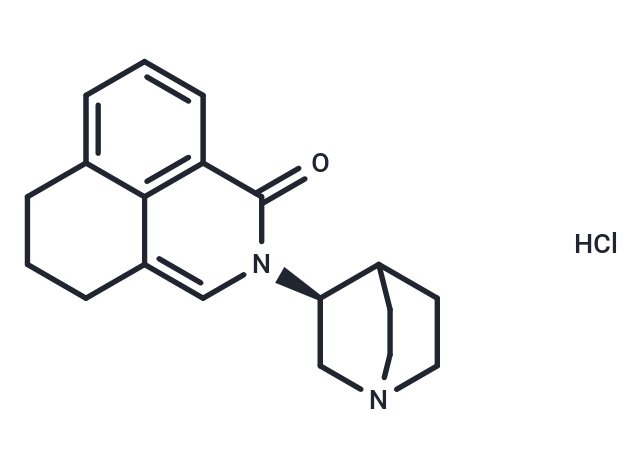Shopping Cart
- Remove All

Your shopping cart is currently empty


| Pack Size | Price | Availability | Quantity |
|---|---|---|---|
| 1 mg | $282 | In Stock | |
| 2 mg | $423 | In Stock | |
| 5 mg | $651 | In Stock | |
| 10 mg | $976 | In Stock | |
| 25 mg | $1,450 | In Stock | |
| 50 mg | $1,960 | In Stock | |
| 100 mg | $2,630 | In Stock | |
| 1 mL x 10 mM (in DMSO) | $646 | In Stock |
| Description | RS 42358-197 (RS 25259-007) is a competitive 5-HT3 receptor antagonist. |
| In vitro | RS 42358-197 acts against 5-HT-induced contractions in the guinea pig ileum (low-potency phase), yielding a pA2 estimate of 8.1[1]. |
| In vivo | In anesthetized rats. RS 42358-197, administered by the intravenous, intraduodenal or transdermal route, dose-dependently inhibited the Bezold-Jarisch reflex induced by 2-methyl 5-HT (ID50:0.05 micrograms/kg; i.v., 5.7 micrograms/kg; i.d., and 11.6 micrograms/chamber, respectively). In this regard, when administered intraduodenally, RS 42358-197 was more potent and exhibited a longer duration of action than either ondansetron or granisetron. In dogs, RS 42358-197, administered either intravenously or orally, dose-dependently inhibited the emesis induced by cisplatin, actinomycin and cyclophosphamide, but not that induced by apomorphine. When tested at maximally effective doses against cisplatin-induced emesis in dogs, RS 42358-197 had a longer duration of antiemetic activity (> 6 h) than ondansetron (2 h). RS 42358-197, administered orally, also afforded protection against cisplatin-induced emesis in ferrets. At doses that showed marked anti-emetic activity in dogs (10-100 micrograms/kg; i.v. and 100-1000 micrograms/kg; i.d.), RS 42358-197 did not produce any hemodynamic changes[1]. |
| Alias | RS-42358-197, RS42358-197, RS 25259-007 |
| Molecular Weight | 330.85 |
| Formula | C19H23ClN2O |
| Cas No. | 135729-55-4 |
| Storage | keep away from direct sunlight|Powder: -20°C for 3 years | In solvent: -80°C for 1 year | |||||||||||||||||||||||||
| Solubility Information | DMSO: 11 mg/mL (33.25 mM) | |||||||||||||||||||||||||
Solution Preparation Table | ||||||||||||||||||||||||||
DMSO
| ||||||||||||||||||||||||||

Copyright © 2015-2024 TargetMol Chemicals Inc. All Rights Reserved.